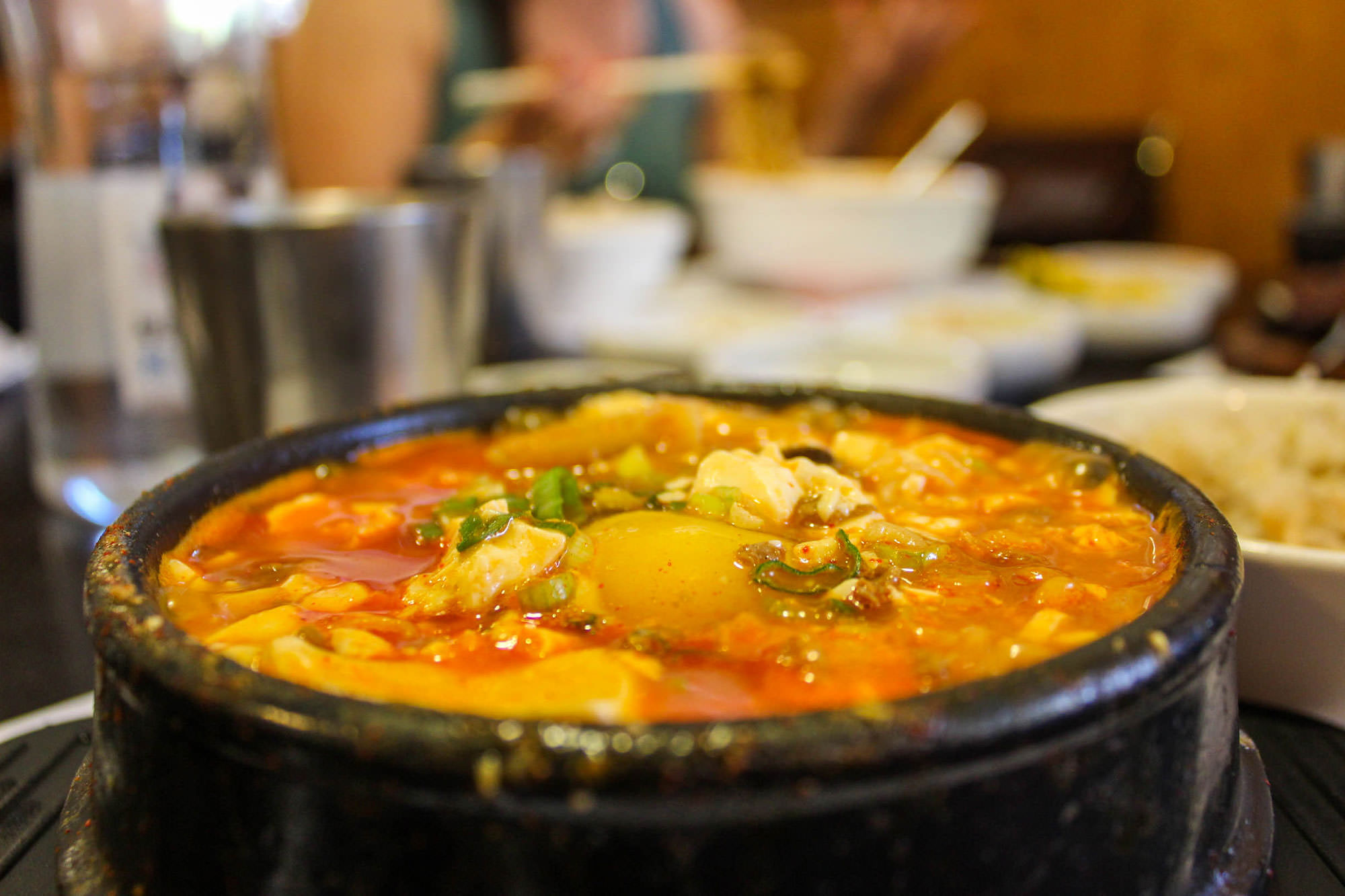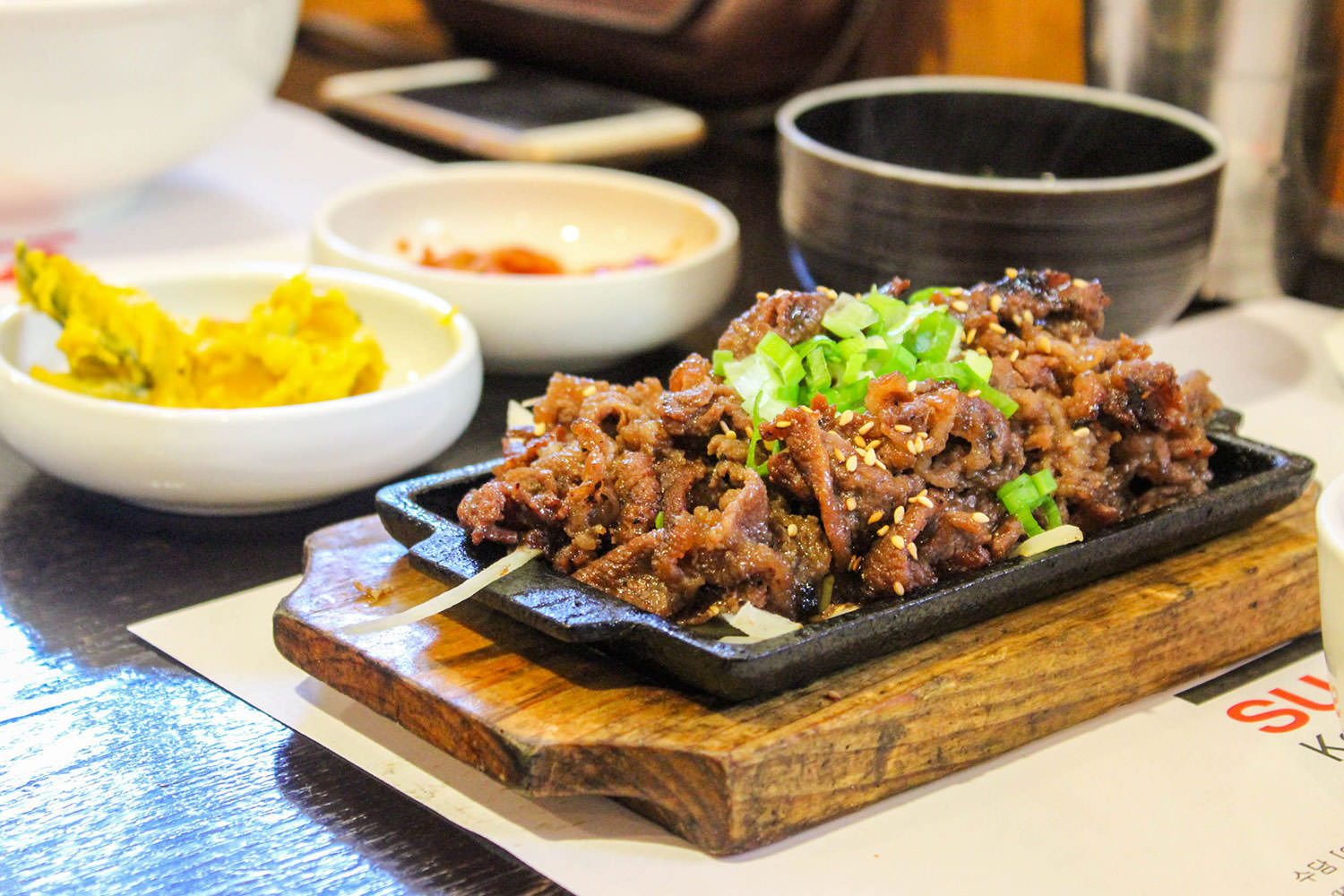
A Korean adoptee, Danielle discovers and retells the stories of her native and adoptive cultures, sharing the lessons of hospitality she has also found in the food of each.
Just like the aggressive profile one gets from the heat of the chili peppers or the funkiness from the fermented soybeans with a sweetness that comes at the end of every taste of gochujang, one can find parallels in the Korean diaspora and the flavor profiles that come with it. One serving of rice provides a taste of comfort, but also highlights the Han — the bitter notes of emotional pain, injustice, and a sense of incompleteness — and the Jeong — the bright notes of hope, love, loyalty, compassion, and emotional attachment. The traditions and wisdom of the past are set out before us in the present, loudly reminding us that “things are going to be OK”.
I am Korean, but growing up, I didn’t feel Korean. My understanding of the Korean diaspora came through the lens of adoption. I grew up Korean American in a white family in the middle-of-nowhere — Iowa — surrounded by an amazing support group who loved me and supported me and continue to do so. But even though I looked Korean on the outside, I felt very white on the inside. It wasn’t until I arrived at college that my identity was questioned. I was bombarded with questions, such as, “Where are you from?” When I answered, “Wellsburg, Iowa,” people would pause and look me over as though they didn’t believe me. But if I told them that I was born in South Korea, they would start to get a picture of me that wasn’t true.
Children of immigrants have explored some of the issues that come with the subject of identity but it is different for children of adoptees. The truth of the question, “Where are you from?” doesn’t reveal the whole truth about me. This resonated with me when the current administration’s anti-immigration policy was becoming a reality and I was standing with thousands of others protesting. The concept of being an “immigrant” as an adoptee became important for me to understand, because I had never identified myself as an immigrant.
As I stood on Main Street in front of my representative’s office, I was overwhelmed by memories of the neighborhood bully and kids on the playground taunting me. I remembered all the times I had to prove my American citizenship in order to get financial aid, and the times someone would call me “Chink” or yell at me with a fake Asian accent. I thought of the time I was waiting for a friend at a Chinese restaurant and a customer came in and asked me for a to-go container. Narratives about immigration forget the stories of international adoptees like me.
When I was adopted, I had to be naturalized, just like any other immigrant. This was before the Child Citizenship Act was passed in 2000, which allows adoptees to gain automatic citizenship under certain guidelines. I was legally adopted when I was 5 and became a naturalized American citizen when I was 7. Yet, becoming a full-fledged citizen never deterred many high school teachers from mistaking me for a foreign exchange student or asking, “Where are you actually from?”
As adoptees, our stories begin in another land — they begin with immigration. Being torn from our roots is something that all adoptees experience. It’s bizarre to have a need to seek the truth about where we’re from when it’s nearly impossible to do so. Our stories may be different from that of most immigrants. But as immigrants, we share the strength and resilience that are necessary to uproot ourselves and begin a new life in a foreign land not of our choosing.

My American family tree also begins with immigration. My dad’s great-great-grandparents left Germany in the early 1900s to start a new life in America and faced anti-immigration sentiments during World War I when anti-German sentiments were rampant. I remember my grandpa telling me stories about teachers who wouldn’t allow him to speak German in school, of how sauerkraut was called “liberty cabbage”, and the names of towns in Iowa being changed from German to English names. Out of this, they passed down to me a treasure trove of family recipes along with lots of love and acceptance.
My parents never wanted me or my brother to forget where we came from. I remember my mom attempting to assemble a Korean meal for which she had no reference points and had to rely on her Filipina friend for Asian recipes. We embraced her friend and always asked for her fried crepe stuffed with hints of aromatic vegetables and ground beef, or her flavorful pork adobo. I am also reminded of my parents sending my brother and me to Korean summer camps where we were fed kimbap, kimchi, rice, and bulgogi and met kids who looked like us.
Food resonates with us on many levels, from the once daily burden of satisfying hunger to the sentimentality of surfaced memories, and from the language used to describe the unlimited flavors of food to ways food nurtures a community of hospitality. These bites of sweetness, sourness, saltiness, and spiciness tell us who we once were, who we are now, and who we are called to become. Three essential ideas woven out of our resilience, pride, and adaptability and have a direct correlation to food are sikgu, bapsang gongdonche, and hospitality. These words come out of the past to beautifully seep into the present Korean American experience.
The literal translation for sikgu is “mouth to be fed” in a household. The concept of family in sikgu is not just biological relationship, but extending the concept of family to others beyond our biological families. The concept of family is centered on sharing a meal and our space with one another. Sikgu is lived out in the active practice of bapsang gongdonche, “a community that eats rice together”. The word for familiarity symbolizes a community of indispensable and absolute hospitality in love and care. It requires both individual and communal participation of invitation, acceptance, preparation, eating, and fellowship with one another.
We have a communal responsibility to feed one another. The word that blends sikgu and bapsang gongdonche is hospitality. The practice of hospitality in bapsang gongdonche is not about “I” or “we”, but all people as a collective community. The practice of hospitality explains why there is always enough to eat. It recognizes the need for each individual story of survival. It recognizes that food is something to be shared. Living and eating together is a way of sharing our life resources with others.
I saw this growing up. At my dinner table, when eating a tangy bite of my aunt’s sauerkraut, or the communal celebration of immigration through a hearty pancake made of rye and wheat flour, dark Karo syrup, anise, mettwurst, and bacon, or the abundance of fruits and vegetables that took over the family gardens and were shared with us by neighbors. And when my mom made a casserole from her catalog of recipes to give someone in our community who needed a meal. Or, when my grandma and great-uncle would come to our house for the traditional Sunday roast and go home with leftovers.
I have been reminded that food has true power, which has made me start to care where my food comes from, what it means to the people that I am feeding, and what it means when someone else feeds me. Food is about all people. Food is what we all have in common. And food brings us together to sit at one table and converse with one another, listen to one another, and understand one another. Food reminds us that we all belong to the same community, like the Korean idiom, hansotbap sikgu — “we eat rice out of the same bowl”.
Food is something tangible. This is why I love to cook. For me, there is a clear sense of completion and accomplishment. It is a constant reminder to be mindful of the transformation and possibility that is occurring when I shape my shaggy dough of flour, salt, and water into dumpling skins that are going to be stuffed with ground pork, ginger, soy sauce, garlic, and scallions. Time and time again, cooking shows us what we can make and do and that we can make change happen. Food has allowed me to go on a remarkable journey of self-discovery by fusing together the recipes I grew up eating with recipes of my immigrant story. Within that, the food that is set out before us ready to eat reaffirms what we can accomplish and reassures us that “things are going to be okay”.

Danielle Krull currently resides in Wellsburg, Iowa as a freelance writer while also working as a server and caterer to save for her yearlong trip around the world. She loves learning about food and culture and hopes to continue writing about both subjects. In her spare time, she is always trying to find the perfect recipe to make the perfect dumpling, reading, listening to podcasts, or traveling.

Michelle Kwon is driven by the need to create thought-provoking images. She tries to better understand humanity through books, conversations, and traveling on her two small feet. For more, visit her website at michkwon.com or follow her Instagram @agentlegraph.